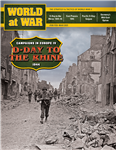
|

|

|

|
 |
|
World at War, Issue #100 - Magazine
|
|
|

D-Day to the Rhine: 1944–45 Early in 1945, the armies of the Western Allies conducted a series of offensives that defeated the Germans in battles starting at the Rhine River and extending to the link up with the Soviets on the Elbe. Those offensives were the payoff of earlier strategic decisions as well as the logistical realities that shaped them. Along with other great articles: The Fall of East Prussia, 1945, Pacific D-Day: Saipan, 15 June 1944, Germany’s Middle East Option

|

|
 |
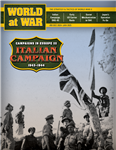
|

|

|

|
 |
|
World at War, Issue #99 - Magazine
|
|
|

Italian Campaign, 1943–45 On 4 June 1944, the US Army entered Rome, making it the first Axis capital to fall. What followed was an advance in which the Allies expected to sweep into and beyond northern Italy. However, the Germans fought a skillful delaying action, finally capitulating only on 29 April 1945. Here is our analysis of the Allies’ strategic failure.

|

|
 |
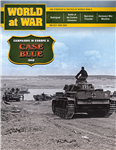
|

|

|

|
 |
|
World at War, Issue #98 - Magazine
|
|
|

Case Blue The turning point of the war in Europe came in the southwestern Soviet Union during the second half of 1942. It began due to Hitler’s attempt to gain the decision in the east while also giving Germany control of the oilfields of the Caucasus. He codenamed the operation Fall Blau (Operation Blue). Its climactic chapter is remembered today as the Battle of Stalingrad.

|

|
 |
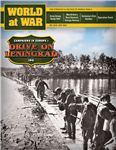
|

|

|

|
 |
|
World at War, Issue #97 - Magazine
|
|
|

Army Group North 1941 On 8 September 1941 the spearheads of German Army Group North reached the outskirts of Leningrad. The capture of the city seemed possible, but then Adolf Hitler gave the order to halt the advance. We offer an analysis of what turned out to be one of the most fateful decisions of World War II.

|

|
 |
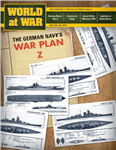
|

|

|

|
 |
|
World at War, Issue #96 - Magazine
|
|
|

War Plan Z: The Kriegsmarine Strikes: When the war started, the German Navy was unprepared for a surface campaign in the Atlantic. However, the aborted pre-war “Plan Z” had called for the creation of a fleet that could challenge the Allies in that way. Had Hitler followed that strategy, the war in Europe would have been entirely different.

|

|
 |
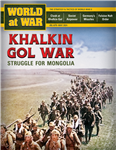
|

|

|

|
 |
|
World at War, Issue #95 - Magazine
|
|
|

Khalkin-Gol War in Inner Asia In 1939 Japan and the USSR fought a small war on the border between Manchukuo (Japanese-controlled Manchuria) and the People’s Republic of Mongolia (a Soviet satellite). The fighting’s outcome turned Japanese ambitions toward the Pacific, but that was not foreordained. The Japanese made plans for a wider war against the Soviets, and that easily might have been the scenario that played out.

|

|
 |
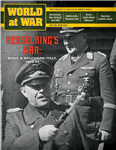
|

|

|

|
 |
|
World at War, Issue #94 - Magazine
|
|
|

Kesselring’s War: On 9 July 1943 two Allied armies landed on Sicily. Instead of the quick victory their high command had anticipated, that campaign and its sequel on the mainland turned into a contest of attrition in which the Germans conducted a strategically successful delay action. The German commander responsible for that turn of events was Albert Kesselring.

|

|
 |
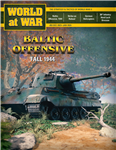
|

|

|

|
 |
|
World at War, Issue #93 - Magazine
|
|
|

The Soviet Baltic Offensive, 14 September–24 November 1944
After crushing Army Group Center, the Red Army cleared the north flank of the front during the late summer and fall of 1944. Along the Baltic, the Soviets regained Estonia and most of Latvia and Lithuania. Even so, German Army Group North—renamed Army Group Courland—remained a strategic thorn in the side of the Soviets until V-E Day, despite repeated Soviet attempts to eradicate it.

|

|
 |
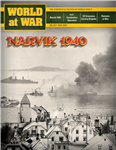
|

|

|

|
 |
|
World at War, Issue #92 - Magazine
|
|
|

Narvik 1940 On 6 April 1940 the troops of the German 139th Mountain Infantry Regiment embarked on a destroyer squadron in Bremen. They were led by Lt. Gen. Eduard Dietl, commander of 3rd Mountain Infantry Division. Their target was Narvik, a port above the Arctic Circle. The fighting there would last for over two months.

|

|
 |
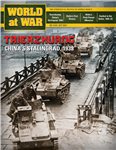
|

|

|

|
 |
|
World at War, Issue #91 - Magazine
|
|
|

Stalin’s First Victory (1929) & The Battle of Taierzhuang (1938) This game includes two separate and distinct battles. Both battles use many of the same rules and concepts, however for ease of play, the rules are separated into two distinct rule sets. The first set of rules cover Stalin’s First Victory and the second The Battle of Taierzhuang. Both games are low complexity two-player grand tactical games.

|

|
 |